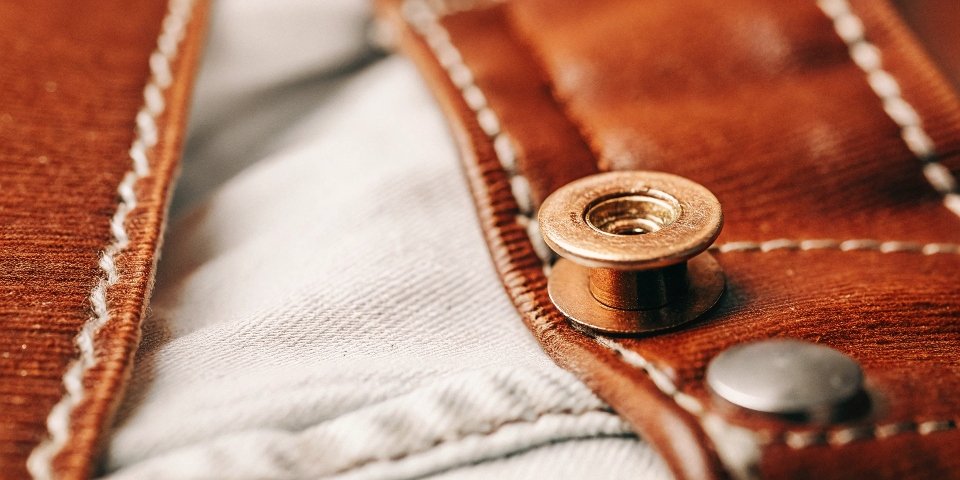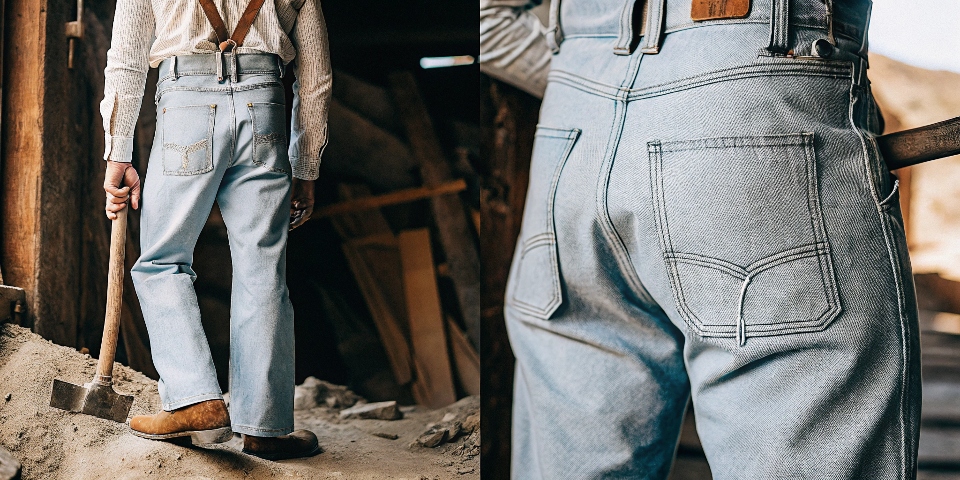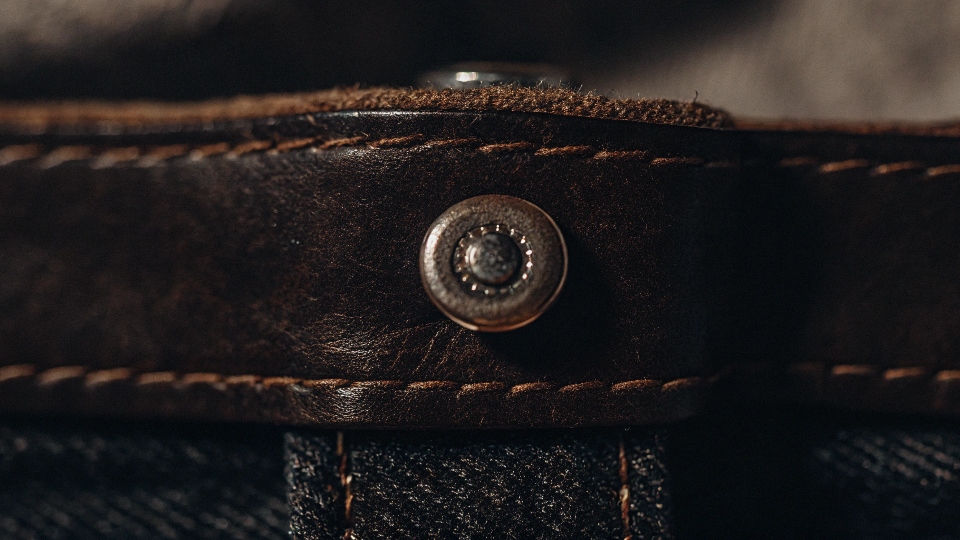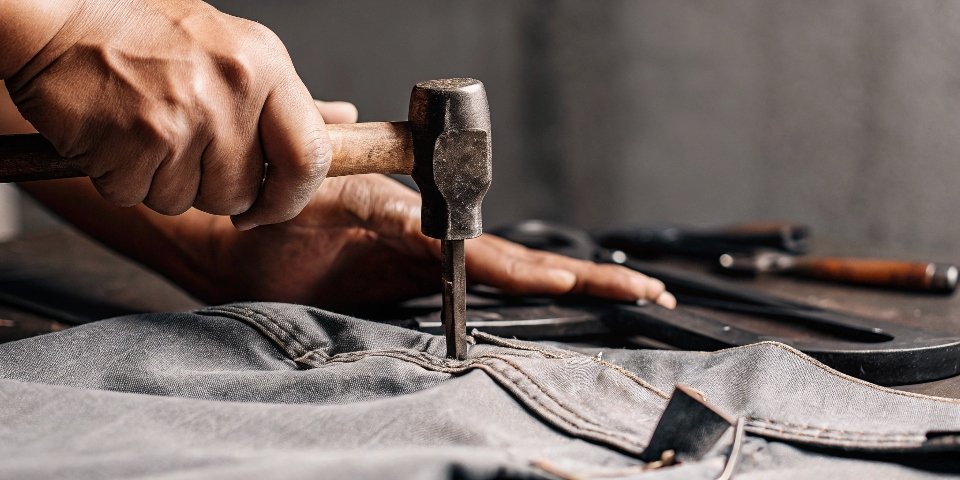You look at the small metal studs on your jeans and wonder if they're just decoration. In a world of modern fabrics, these bits of hardware can even seem pointless, scratching your phone or furniture.
You might like a rivet-less jean for a dressier look, but a classic blue jean would lose its soul. Rivets are no longer functionally essential, but they are the visual signature that connects jeans to their authentic, durable workwear heritage.
To me, this question is personal. As someone who has spent over two decades making jeans, I see rivets as part of their DNA. A client once asked me to produce a line of classic 5-pocket jeans without them for a cleaner look.
We made the samples, and while the quality was there, something felt deeply wrong. As your insight mentions, it felt strange, like the jeans were missing a piece of their character. I prefer jeans with rivets because it feels like a fundamental truth.
Let's explore why that little piece of metal has such a powerful hold on what makes a jean a jean.
Do jeans still need rivets?
You want to design a modern, minimalist jean and think the rivets look dated. You know that modern stitching is strong, so you wonder if removing them is a good design choice or a mistake that ignores tradition.
Functionally, no. Modern bar tack stitching is strong enough to secure stress points without rivets. Aesthetically and historically, yes. For a garment to be considered a classic "blue jean," the rivets are still a necessary visual cue of authenticity.
In my factory, we use both methods. A bar tack is a series of very tight, dense zig-zag stitches that create incredible reinforcement. For many garments, especially stretch denim or more formal denim trousers, a bar tack is a cleaner and more modern choice.
It gets the job done without the bulk of a metal rivet. But when a designer like Dean sends me a tech pack for a classic 5-pocket jean, the rivets are non-negotiable. They serve a purpose beyond simple function.
They are a promise to the customer that this garment is part of a long heritage of durability. Removing them can make the jean feel less substantial, less "real."
| Feature | Rivet1 | Bar Tack Stitching2 |
|---|---|---|
| Primary Function | Prevents fabric from tearing at stress points | Reinforces stress points with dense thread |
| Aesthetics | Rugged, heritage, traditional, metallic | Clean, minimalist, modern, integrated |
| Heritage | The original 1873 patented method | A modern sewing machine innovation |
| Best For | Classic 5-pocket jeans, workwear, raw denim | Stretch denim, minimalist designs, denim trousers |
Why were rivets added to jeans?
You see rivets on every pair of jeans and assume they've always been there. You're curious about the origin story and why this one specific feature became so universal across all brands and styles.
Rivets were added to solve a real-world problem. In 1873, tailor Jacob Davis and fabric supplier Levi Strauss patented the idea of placing copper rivets on the stress points of workers' pants to keep them from ripping.
This isn't just a piece of trivia; it's the creation story of the blue jean as we know it. The story starts with a customer of a tailor named Jacob Davis. Her husband was a laborer who constantly ripped the pockets of his work pants.
Davis had a brilliant idea. He was using copper rivets3 to attach straps to horse blankets and realized he could use the same hardware to permanently secure the pocket corners on pants. It worked perfectly. Knowing he had a revolutionary idea, he needed a business partner to scale it. He wrote to his fabric supplier, Levi Strauss, and together they secured the U.S. patent4.
This single innovation transformed a simple pair of denim work pants into a durable, reliable piece of equipment for miners, cowboys, and farmers. The rivet wasn't a fashion choice; it was an engineering breakthrough that built an entire industry.
What is the purpose of the rivets on our jeans?
You understand the history, but you know your jeans aren't being used for mining gold. So, you wonder what purpose the rivets serve today, in a world of office jobs and casual wear.
The modern purpose of rivets is primarily to preserve the authentic look and feel of blue jeans. They are a powerful symbol of heritage and quality, while also providing some secondary reinforcement and branding opportunities for the maker.
While a rivet still adds structural integrity, its role has evolved. Today, I tell my clients that rivets serve three main purposes:
- Heritage5: This is the most important one. The rivet is a direct link back to 1873. It tells a story of durability, authenticity, and American ingenuity. It's the design feature that separates a "jean" from just a pair of five-pocket pants made from denim.
- Branding: Look closely at the rivets on different brands. Many are customized with the company's logo. This small metal detail is a subtle but permanent branding element, a sign of quality and attention to detail that designers care about.
- Reinforcement: While a bar tack can do the job, a rivet still offers rugged, physical reinforcement. On heavyweight, 100% cotton raw denim, that extra hardware still provides a tangible benefit, ensuring the corners never fail.
Interestingly, you can also trace the evolution of jeans by the rivets that are missing. Early jeans had a rivet at the base of the fly, but it was removed after cowboys complained it would get too hot next to a campfire! Many brands also conceal the back pocket rivets to prevent them from scratching leather saddles and, today, furniture.
Can you replace rivets on jeans?
A rivet on your favorite, perfectly worn-in jeans has popped off, leaving an ugly hole. You're worried the jeans are ruined forever and don't know if this is something that can even be fixed.
Yes, you can absolutely replace rivets on jeans. It involves carefully removing the old post from behind the fabric and using a special tool or a hammer to set a new rivet in its place. Repair shops offer this service.
This is a common repair, although it takes a bit of care to do correctly. In my factory, we use industrial presses6 that apply immense, even pressure to set rivets perfectly every time. Recreating that at home is trickier but possible.
The process involves two parts: the "tack" (the sharp post that goes through the fabric from the inside) and the "burr" (the smooth outer cap you see). To replace one, you first need to remove the old tack, which might require prying it off or even drilling out the center. Then, you push a new tack through the hole, place the new burr on top, and hammer them together on a hard surface.
The biggest challenge is finding a replacement rivet that matches the originals. For a professional finish, I always recommend taking your jeans to a specialty denim repair shop7. They have the right tools and a variety of hardware to make the repair look like it never happened.
Conclusion
You would probably wear jeans without rivets, but they wouldn't truly be "blue jeans." That small piece of metal is a vital link to their history, a symbol of their strength.
-
Discover the significance of rivets in denim jeans, ensuring durability and a connection to heritage. ↩
-
Explore this link to understand how Bar Tack Stitching enhances durability and modern aesthetics in clothing. ↩
-
Explore how copper rivets revolutionized clothing durability and design, shaping the fashion industry. ↩
-
Learn about the significance of patents in innovation and how they protect creative ideas in fashion. ↩
-
Exploring this link will deepen your understanding of how heritage influences modern denim craftsmanship. ↩
-
Explore this link to understand how industrial presses work and their importance in achieving precision in repairs. ↩
-
Discover the specialized services of denim repair shops to ensure your jeans are restored to perfection. ↩











